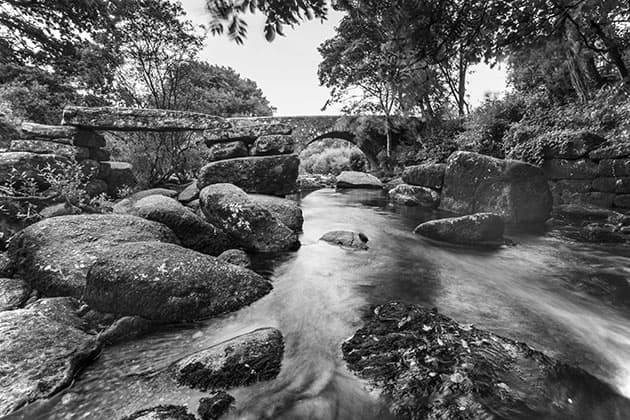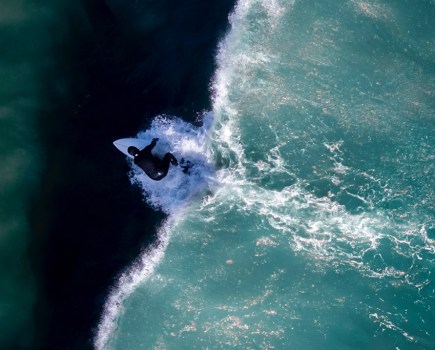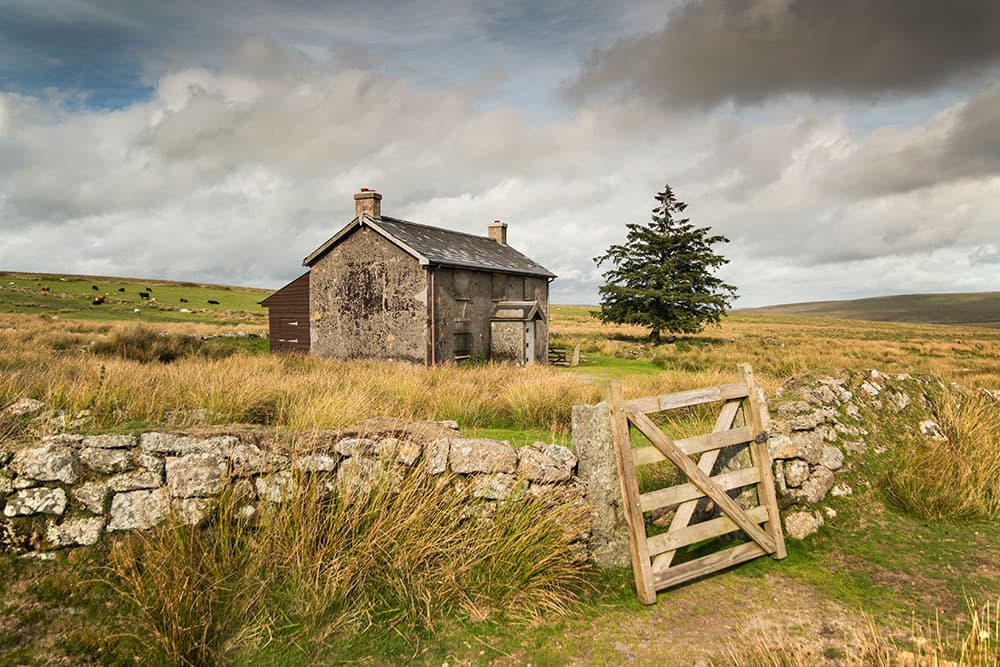
Including the gate and stone wall helps for a balanced composition. Credit: Claire Gillo
Dartmoor is a wild, adventurous and unforgiving landscape for the outdoor photographer. To start your tour, take a walk down to Nun’s Cross Farm, about 2½ miles south east of Princetown. This old, abandoned building sits conveniently between two identical trees. There’s also an old granite cross that stands to the left of the farm. Both of these offer plenty of pleasing compositions for the photographer.
If you’re after an iconic Dartmoor tor the biggest and most well known is Haytor; however drive round a bit further and you’ll find Hound Tor. This towering stack of granite rocks takes your breath away and by hiking to the top you can frame an attractive composition with Haytor in the background. Saddle Tor has many hidden gems, from bluebells in May to the west of the tor at Emsworthy, to scattered hawthorn trees in the summer, including one very wonky, wind-blown tree that has become a staple shot for photographers.
There are plenty of water sources on Dartmoor. Dartmeet is a beautiful part of the river and by clambering across the boulders near the bridge you can create a picture-perfect postcard image. There’s also a handy car park and cafe right next to the river.
For moss-covered trees then Wistman’s Wood is a must-see, and is about a 20-minute walk from the car park. It is best to visit in atmospheric conditions, such as a misty day, for impressive results.
Finally, remember to keep an eye out for all types of wildlife. Dartmoor is especially well known for its wild ponies that roam the land freely.
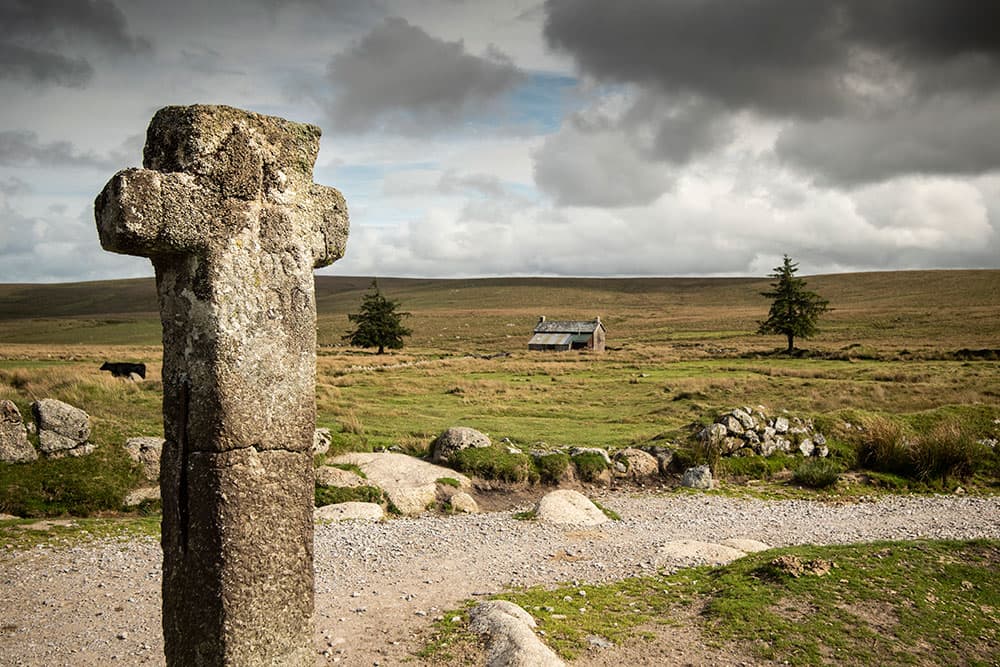
Make use of the two trees and granite cross to frame the building. Credit: Claire Gillo
Tips for taking photographs on Dartmoor
When to go
Dartmoor can be photographed 24/7, 365 days of the year! Each season has different things to offer, so you can see snow-capped tors in the winter and blooming bluebells and idyllic hawthorn trees in the summer.
Food and lodging
There are plenty of local pubs, restaurants, and cafes dotted around Dartmoor. For a traditional cream tea to satisfy the stomach take a trip to Badgers Holt and enjoy its beautiful garden setting at Dartmeet.
It is possible to wild camp at Dartmoor for one or two nights if your location is well away from any roads or settlements and you abide by the no-impact rule. However, camping isn’t for everyone, and if comfort is what you’re after then Prince Hall Hotel is worth a look, or for those on a budget there’s the YHA Dartmoor in the heart of the landscape. For more information on food and lodging, refer to www.visitdartmoor.co.uk.
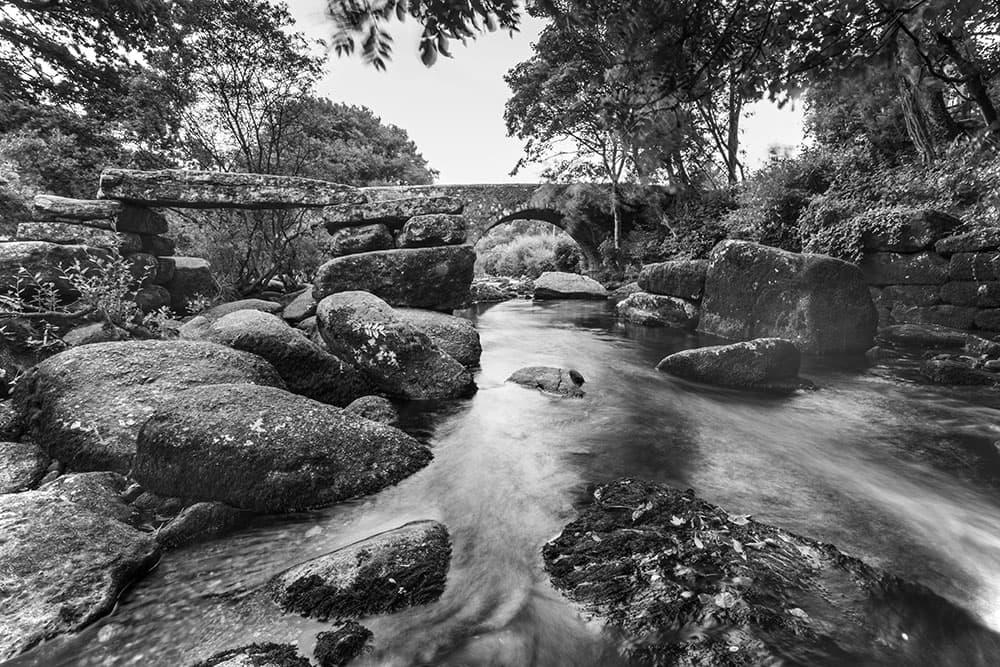
The river at Dartmeet is great for long exposures. Credit: Claire Gillo
Dartmoor weather and precautions
The weather at Dartmoor can change in a matter of seconds, so if you’re going off the beaten track then make sure you are fully prepared with maps, clothing and supplies. The landscape can be extremely unforgiving and unpredictable. Make sure you tell others of your whereabouts and plans. Take care when driving, as you should keep an eye out for sheep and cows that may cross your path. Also it’s a great opportunity to photograph any wildlife that might appear, such as the area’s wild ponies.
Kit list
- Waterproofs & hiking boots It can be bleak and freezing so wear sensible clothing and sturdy hiking boots that can withstand those bogs. Full head-to-toe waterproofs will also be a blessing when the bad weather hits.
- Lens choice There is no doubt that a 16-35mm will get used a lot in this wild location, but also pack a telephoto lens such as a 70-200mm – you’ll be glad of it if you want to shoot some stretching panoramas.
- Tripod You’ll have to compromise between a lightweight model for carrying and a heavier one for
stability as the winds can whip round in the open spaces. Secure your tripod by hanging your camera bag
from the centre column.
Claire Gillo is a photographer and writer based in South West England. She has worked for a number of photography magazines over the past decade. Visit www.facebook.com/Clairegillophotography or on Instagram @clairegillophotography

